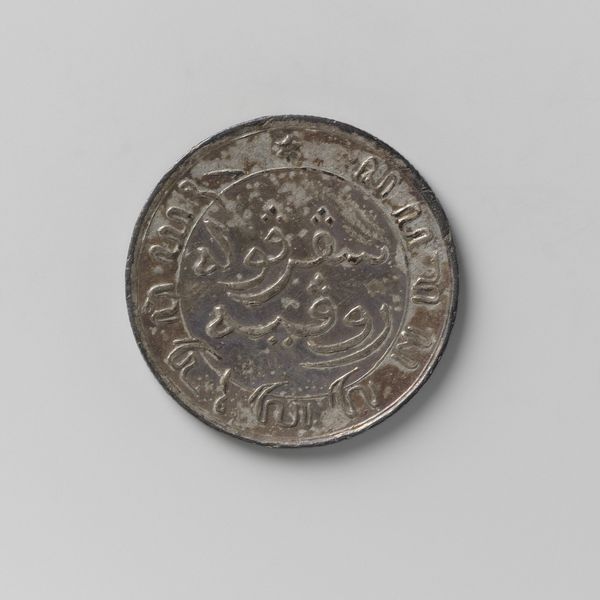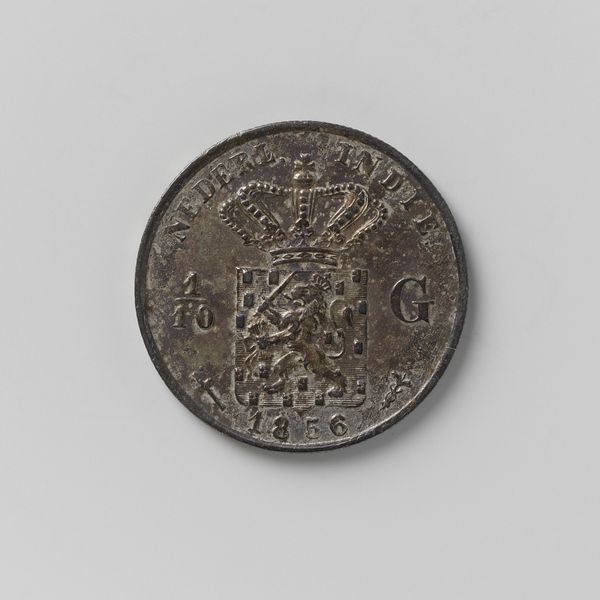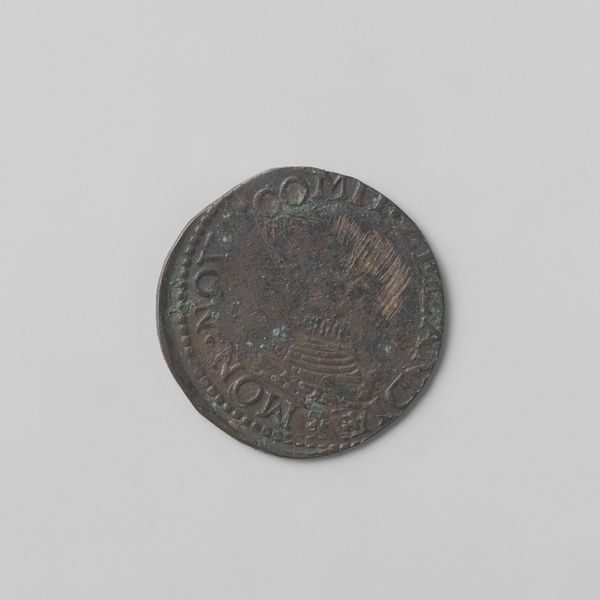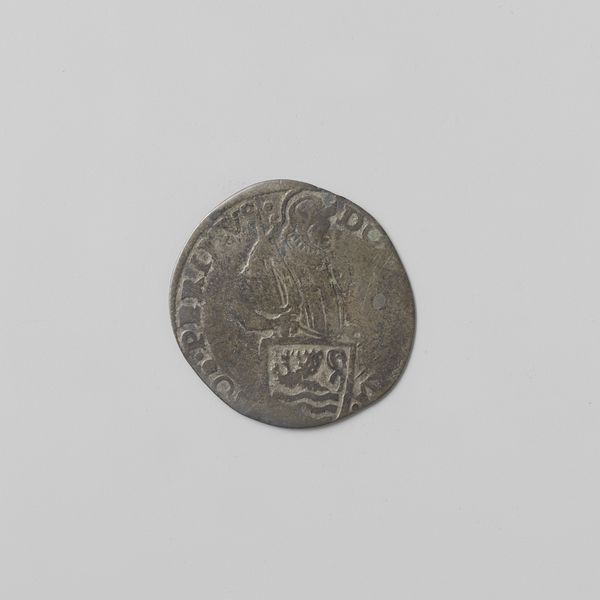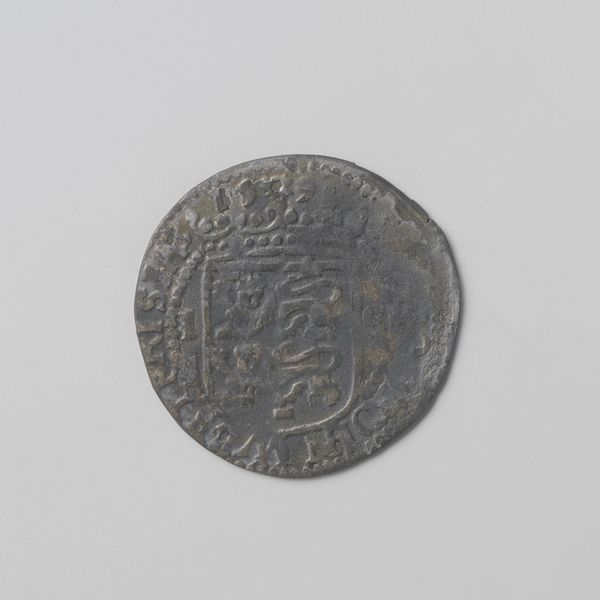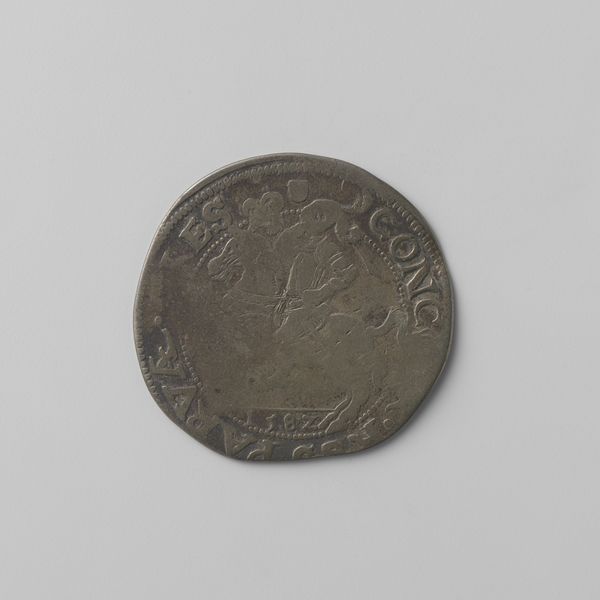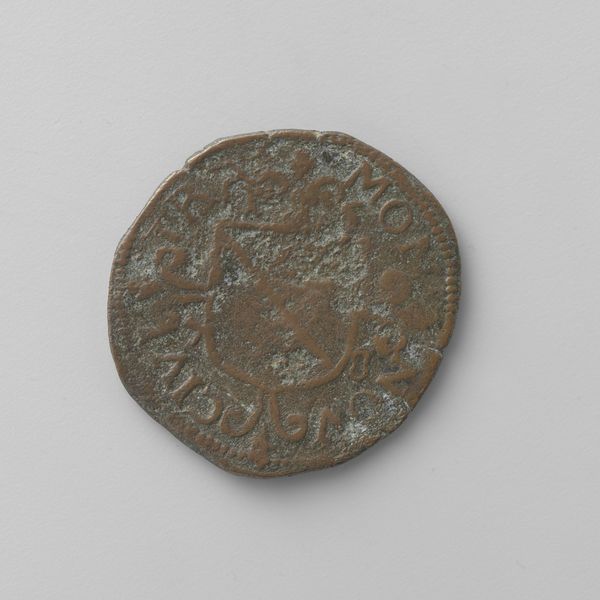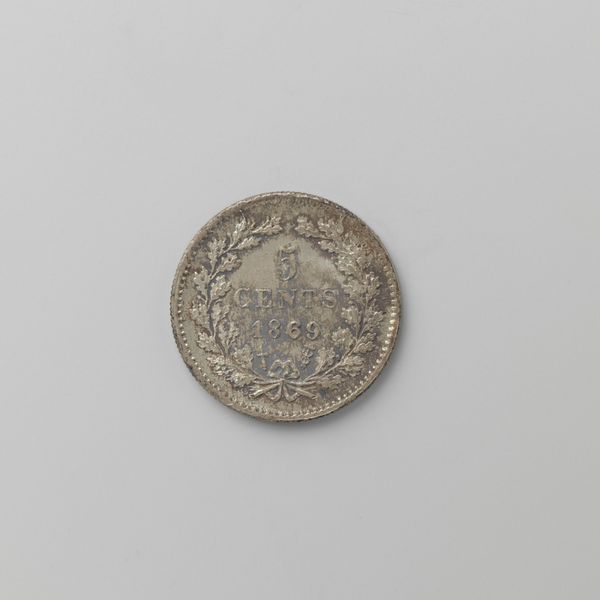
print, metal, photography
#
studio photography
#
product studio photography
# print
#
metal
#
asian-art
#
photography
#
islamic-art
#
product photography
Dimensions: diameter 1.3 cm, weight 0.61 gr
Copyright: Rijks Museum: Open Domain
Curator: Here we have a 1/20 gulden coin from the Dutch East Indies, dated 1855. It’s currently held in the Rijksmuseum collection. Editor: The coin’s tarnished silver gives it an almost ghostly presence. I find the Arabic script deeply compelling—it reminds me of palimpsests layered through history. Curator: This coin represents more than mere currency; it's a potent symbol of colonial exchange. Consider the silver itself, likely mined under exploitative conditions, shipped across continents, and then transformed into currency to further entrench Dutch power. Editor: Exactly. Who benefitted from the creation of this object, and who was exploited in the process? It's a tiny coin, yet it encapsulates so much of the asymmetry of colonial power, not to mention forced labour and control of natural resources. Curator: And let's not forget the manufacturing process. The minting, the distribution—each step required labor, resources, and infrastructure designed to support the colonial administration and extend its reach. We can also explore coin design choices as they would’ve related to local artistry. Editor: Right. It’s interesting to consider this coin in relationship to, say, Indigenous artistry during the same era. What narratives were suppressed, and how did colonial artifacts displace traditional forms of exchange and symbolic representation? Curator: It’s a compelling visual bridge connecting seemingly disparate materials and the colonial economic and political reality from which it arose. The gulden, like many colonial currencies, fueled the exploitation of both people and resources. Editor: The weight of that history on such a small object! It becomes an icon for all that was traded, lost, and taken during that time. And prompts critical awareness about colonial afterlives within contemporary economies. Curator: Indeed. Examining an artifact such as this with an approach that recognizes its connection to the larger process from production to distribution exposes so much about the Dutch colonial system. Editor: It truly makes you think about the power of even the smallest objects to reflect massive historical inequalities and their ongoing impact. It makes me curious about decolonial approaches to numismatics!
Comments
No comments
Be the first to comment and join the conversation on the ultimate creative platform.
